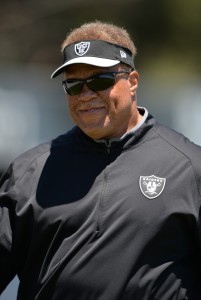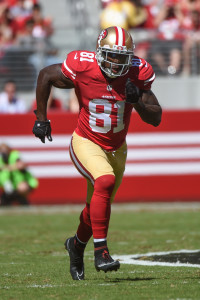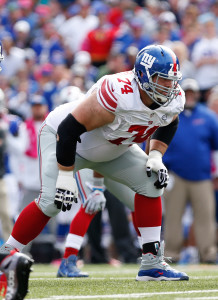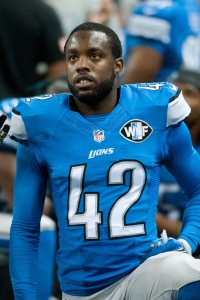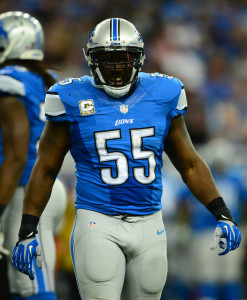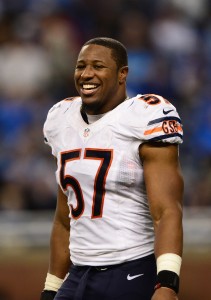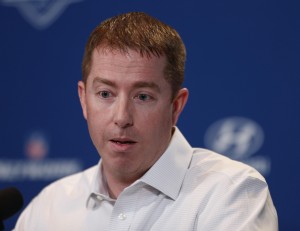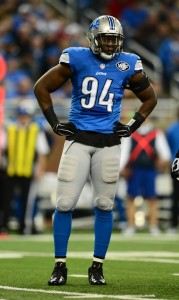It was a typical offseason for the Patriots. A looming suspension/punishment for the organization or star player. The defection of a star defender. The acquisition of notable veterans and high-upside players. A flurry of draft-night trades. In other words, it wasn’t a normal offseason by any other standard.
The whole Deflategate fallout seemed to dominate offseason talk, so many of the Patriots moves went under the radar. However, per usual, the team added enough depth to offset any of their notable subtractions. As a result, the Patriots should once again be in the driver’s seat for the AFC title.
While most of the Patriots offseason discussion focused on the quarterback and trades, the teams various signings seemed to fly under the radar. Still, the team managed to add several players via free agency who should contribute to this year’s squad.
Hogan wasn’t the only weapon added to Brady’s arsenal. The team signed veteran receiver Nate Washington, who caught 47 passes for 658 yards with the Texans last season. While the 32-year-old has proven to be a durable, consistent option, there’s no certainty that he’ll ultimately make the team.
With a number of intriguing veteran options on the running back market, there was a general assumption that the Patriots would look to add some reinforcement to their backfield. After all, the team finished 30th in rushing yards last season, and the team ultimately had to rely on 32-year-old Steven Jackson during the postseason. Furthermore, considering Brady’s impending suspension, the Patriots wouldn’t be able to lean on the passing game through the first month of the season.
As the end of the day, the team did little to improve the run game. The Patriots brought back 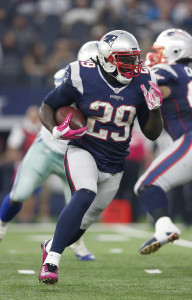 LeGarrette Blount, who spent parts of the past three seasons in New England. After having average 4.9 yards per attempt through his first 21 games with the Patriots, the 29-year-old saw those numbers dip to 4.3 yards per attempt last season. The team also brought in veteran running back Donald Brown, who spent the past two seasons with the Chargers. The former first-rounder had averaged 5.3 yards per carry during his final season with the Colts, but those numbers dropped to 3.1 yards per carry over the past two years. Fortunately, the team could also look forward to the return of Dion Lewis, whose breakout season ended with a torn ACL. Through seven games, the 25-year-old compiled 234 yards on 49 attempts (as well as an impressive 388 yards on 36 catches).
LeGarrette Blount, who spent parts of the past three seasons in New England. After having average 4.9 yards per attempt through his first 21 games with the Patriots, the 29-year-old saw those numbers dip to 4.3 yards per attempt last season. The team also brought in veteran running back Donald Brown, who spent the past two seasons with the Chargers. The former first-rounder had averaged 5.3 yards per carry during his final season with the Colts, but those numbers dropped to 3.1 yards per carry over the past two years. Fortunately, the team could also look forward to the return of Dion Lewis, whose breakout season ended with a torn ACL. Through seven games, the 25-year-old compiled 234 yards on 49 attempts (as well as an impressive 388 yards on 36 catches).
LaAdrian Waddle could be blocking for the duo in 2016, although there’s no certainty that the 25-year-old will make the roster. The former undrafted free agent was added by the Patriots last December following two-plus seasons with the Lions. As PFR’s Zach Links noted, Waddle was rated as Pro Football Focus’ worst qualified offensive tackle in the league, and the lineman hasn’t been capable of staying healthy throughout his career.
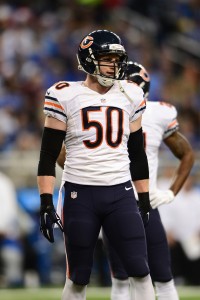 On the other side of the ball, the Patriots did an admirable job of adding solid veterans on affordable deals. The most notable addition was linebacker Shea McClellin, who spent his entire four-year career in Chicago. The former first-round pick has averaged 13 games a season throughout his career, and after having his fifth-year option declined, he finished 2015 with a career-high in tackles (81). The 27-year-old’s ability to play both linebacker and defensive end will certainly earn him a significant role on the team.
On the other side of the ball, the Patriots did an admirable job of adding solid veterans on affordable deals. The most notable addition was linebacker Shea McClellin, who spent his entire four-year career in Chicago. The former first-round pick has averaged 13 games a season throughout his career, and after having his fifth-year option declined, he finished 2015 with a career-high in tackles (81). The 27-year-old’s ability to play both linebacker and defensive end will certainly earn him a significant role on the team.
The Patriots continued their offseason theme of adding former first-round picks by signing former second-overall pick Chris Long to a one-year deal. The 31-year-old hasn’t been particularly healthy over the past two seasons, playing in a total of 18 games. Still, the defensive end was a force from 2010 through 2013, and playing behind both Rob Ninkovich and Jabaal Sheard should preserve the veteran throughout the campaign.
Elsewhere on the defensive line, the Patriots seemingly added a starting defensive tackle in veteran Terrance Knighton. ‘Pot Roast’ is still going strong after seven seasons in the league, and the 30-year-old has only missed an incredible four games throughout his career. After two seasons with the Broncos, Knighton spent 2015 with the Redskins, where he compiled 29 tackles and 1.5 sacks in 15 games. The team did select Malcom Brown in the first-round of the 2015 draft, but the departures of Akiem Hicks and Sealver Siliga meant the team needed some depth at the position.
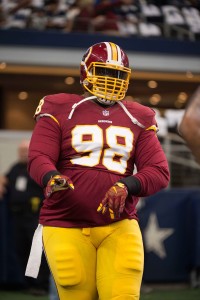 To round out the defensive line, the Patriots also added defensive tackle Markus Kuhn. The four-year veteran spent his entire career with the Giants, where he compiled 39 tackles and 1.5 sacks over 24 games between the past two seasons. The Patriots also signed defensive end Frank Kearse, who followed a promising 2014 campaign (15 tackles, three sacks) with a disappointing 2015 season.
To round out the defensive line, the Patriots also added defensive tackle Markus Kuhn. The four-year veteran spent his entire career with the Giants, where he compiled 39 tackles and 1.5 sacks over 24 games between the past two seasons. The Patriots also signed defensive end Frank Kearse, who followed a promising 2014 campaign (15 tackles, three sacks) with a disappointing 2015 season.
The Patriots brought back safety Nate Ebner on a two-year deal. While the Olympic rugby player probably won’t get much play in the defensive backfield, he’ll surely play a role on special teams. As our own Sam Robinson noted, Ebner finished last season with 11 special teams tackles, the third-best total on the team.
Meanwhile, free agent addition E.J. Biggers could establish a role at cornerback for the Patriots. The former seventh-round pick surely won’t unseat starters Malcolm Butler and Logan Ryan, but he’ll be competing with a collection of players for that third or fourth corner spot. The Patriots also added an intriguing prospect in safety Vinnie Sunseri, although the 22-year-old will certainly have an uphill battle to make the roster. The same goes for linebacker Ramon Humber, although the former Saint could easily carve out a role on the squad. The former North Dakota State standout established himself as a formidable special teams force during his time in New Orleans, and the team’s muddled linebacker depth means the 28-year-old could also contribute on defense.
Notable losses:
- Josh Boyce, WR
- Tarell Brown, CB
- Scott Chandler, TE: Released
- Dominique Easley, DT: Waived
- Darius Fleming, LB: Waived
- Dane Fletcher, LB: Retired
- Brandon Gibson, WR
- Akiem Hicks, DL
- Joey Iosefa, RB: Waived
- Steven Jackson, RB
- Leonard Johnson, CB: Released
- Chris Jones, DT: Waived
- Ishmaa’ily Kitchen, DL: Released
- Brandon LaFell, WR: Released
- Eric Martin, LB: Waived
- Jerod Mayo, LB: Retired
- Rashaan Melvin, CB: Released
- Sealver Siliga, DT
- Brian Tyms, WR
- Dekoda Watson, LB
- Ryan Wendell, C
- Tavon Wilson, S
It’d be a stretch to say that any of the departed Patriots free agents played a major role for the 2015 squad, but there were several players who will certainly be missed.
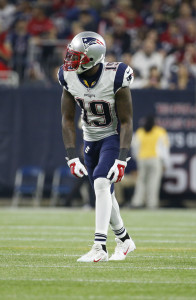 From an actual snap-count standpoint, receiver Brandon LaFell is the team’s most significant loss. Following a 2014 campaign where he set career-highs in receptions (74), yards (953) and touchdowns (seven), the veteran wideout struggled through injuries and inconsistencies in 2015. LaFell finished the campaign with 37 receptions, 515 yards, and no touchdowns, numbers that rival his career-lows.
From an actual snap-count standpoint, receiver Brandon LaFell is the team’s most significant loss. Following a 2014 campaign where he set career-highs in receptions (74), yards (953) and touchdowns (seven), the veteran wideout struggled through injuries and inconsistencies in 2015. LaFell finished the campaign with 37 receptions, 515 yards, and no touchdowns, numbers that rival his career-lows.
Besides LaFell, the team lost another trio of wideouts, although none of the three saw the field for the Patriots in 2015. Former Rams receiver Brandon Gibson was a buy-low grab by the Patriots following two underwhelming seasons in Miami, but he was placed on the injured reserve prior to the season. Former fourth-rounder Josh Boyce never established himself through his three seasons in New England, compiling only nine receptions for 121 yards. Brian Tyms had several big games for the Pats in 2014, but an achilles injury kept him off the field last season.
The loss of veteran linebacker Jerod Mayo will likely have more of an impact on the locker room than the actual field. After being drafted 10th overall, the University of Tennessee product  instantly established himself as a presence in the middle of the Patriots defense. From 2008 through 2012, Mayo only missed three regular season games, and he earned a pair of Pro Bowl appearances and a first-team All-Pro selection during that span. After having played 12 combined games between 2013 and 2014, Mayo did see the field for all 16 contests in 2015. However, the veteran started only eight games while barely playing 400 snaps, resulting in a career-low in tackles (47). A shoulder injury ultimately kept Mayo from playing in the AFC Championship game, and the 30-year-old announced his retirement less than a month later.
instantly established himself as a presence in the middle of the Patriots defense. From 2008 through 2012, Mayo only missed three regular season games, and he earned a pair of Pro Bowl appearances and a first-team All-Pro selection during that span. After having played 12 combined games between 2013 and 2014, Mayo did see the field for all 16 contests in 2015. However, the veteran started only eight games while barely playing 400 snaps, resulting in a career-low in tackles (47). A shoulder injury ultimately kept Mayo from playing in the AFC Championship game, and the 30-year-old announced his retirement less than a month later.
Tight end Scott Chandler was brought on board to provide another talented target to Brady’s arsenal, but the veteran wasn’t nearly as productive as he was in Buffalo. Between 2011 and 2014, Chandler averaged 45 receptions, 528 receiving yards, and four touchdowns a season. In 2015, he compiled only 23 receptions, 259 yards, and four scores. While the 31-year-old did contribute as a blocker and special teamer, the presence of other tight ends made the veteran expendable.
 Perhaps the most surprising subtraction was defensive lineman. The 2014 first-round pick struggled with injuries throughout his Patriots tenure, although he did show brief flashes when he did see the field. Reports indicated that the move was attributed to Easley’s knees, as well as “off-field issues.” With plenty of talent on the defensive line, the front office clearly believed they were better off without the headache.
Perhaps the most surprising subtraction was defensive lineman. The 2014 first-round pick struggled with injuries throughout his Patriots tenure, although he did show brief flashes when he did see the field. Reports indicated that the move was attributed to Easley’s knees, as well as “off-field issues.” With plenty of talent on the defensive line, the front office clearly believed they were better off without the headache.
The Patriots lost another pair of defensive linemen in Akiem Hicks and Sealver Siliga. Hicks ultimately played in 13 games for the squad after being acquired from the Saints, totaling 21 tackles and three sacks. Siliga had spent the past three seasons in New England, compiling 5.5 sacks in 25 games. The duo combined for 636 snaps last season, but the free agent and rookie additions (as well as the increased roll for former first rounder Malcom Brown) should reduce the sting of the departures.
The Patriots will see a bit of a makeover in their secondary, as the team lost four defensive backs. The most notable subtraction was safety Tavon Wilson, who played in 54 games during his four seasons in New England. Following an impressive rookie campaign where he picked off four passes, Wilson struggled to hold a consistent role in the following seasons. The trio of Tarell Brown, Rahsaan Melvin, and Leonard Johnson ultimately proved to be nothing more than 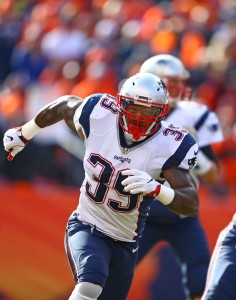 experiments in 2015, with none of the three playing more than 200 snaps.
experiments in 2015, with none of the three playing more than 200 snaps.
The team didn’t ask back running back Steven Jackson, who had four unwhelming games (including playoffs) with the Patriots last season. Meanwhile, veteran center Ryan Wendell started 44 games for the Patriots between 2012 and 2014, earning him a captain distinction prior to the 2015 campaign. However, injuries and the presence of Bryan Stork kept Wendell off the field, and the 30-year-old still hasn’t found a job for 2016. Considering his familiarity with the offense, the veteran could presumably return if the team is seeking additional offensive line help.
Trades:
- Acquired C/G Jonathan Cooper and a 2016 second-round pick (No. 61) from the Cardinals in exchange for LB Chandler Jones.
- Acquired TE Martellus Bennett and a 2016 sixth-round pick (No. 204) from the Bears in exchange for a 2016 fourth-round pick (No. 127).
- Acquired a 2016 third-round pick (No. 78) and a 2016 fourth-round pick (No. 112) from the Saints in exchange for a 2016 second-round pick (No. 61).
- Acquired a 2016 fifth-round pick (No. 147) from the Dolphins in exchange for two 2016 sixth-round picks (Nos. 196 and 204) and a 2016 seventh-round pick (No. 250).
- Acquired a 2016 seventh-round pick (No. 225) and a 2017 fourth-round pick from the Seahawks in exchange for a 2016 fifth-round pick (No. 147).
- Acquired a conditional 2017 seventh-round pick from the Lions in exchange for LB Jon Bostic.
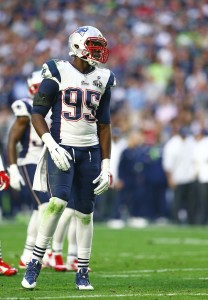 The team’s two biggest offseason moves undoubtedly came via trade. With several talented defenders becoming eligible for an extension, the Patriots had some interesting decisions to make regarding their impending payouts. The team somewhat solved their issues in mid-March, dealing defensive end Chandler Jones to the Cardinals. The 26-year-old started 52 games for the Patriots after being selected in the first round of the 2012 draft, averaging nine sacks a season. Jones had one of his best seasons in 2015, compiling 44 tackles and 12.5 sacks in 15 games. While the subtraction of a player of Jones caliber is never a positive, the Patriots are fortunate to have enough depth on the defensive line. Jabaal Sheard will presumably take Jones’ spot in the starting lineup, while 2015 draft picks Geneo Grissom and Trey Flowers could be the future at the position.
The team’s two biggest offseason moves undoubtedly came via trade. With several talented defenders becoming eligible for an extension, the Patriots had some interesting decisions to make regarding their impending payouts. The team somewhat solved their issues in mid-March, dealing defensive end Chandler Jones to the Cardinals. The 26-year-old started 52 games for the Patriots after being selected in the first round of the 2012 draft, averaging nine sacks a season. Jones had one of his best seasons in 2015, compiling 44 tackles and 12.5 sacks in 15 games. While the subtraction of a player of Jones caliber is never a positive, the Patriots are fortunate to have enough depth on the defensive line. Jabaal Sheard will presumably take Jones’ spot in the starting lineup, while 2015 draft picks Geneo Grissom and Trey Flowers could be the future at the position.
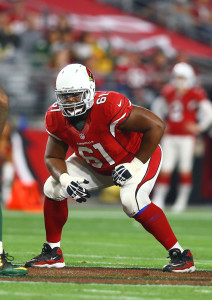 In return, the Patriots acquired offensive lineman Jonathan Cooper and a second-round pick. The guard was the seventh overall pick in 2013, but injures derailed much of his tenure in Arizona. Cooper missed his entire rookie season with a broken fibia, and he only appeared in 24 games (11 starts) over the past two seasons. The 26-year-old is currently slotted in as the team’s starting right guard, although it’s worth noting that the Patriots spent a pair of 2015 draft picks on offensive guards (Shaq Mason, Tre’ Jackson). The team predictably dealt off the second-rounder for additional draft picks, which we’ll get to in a moment.
In return, the Patriots acquired offensive lineman Jonathan Cooper and a second-round pick. The guard was the seventh overall pick in 2013, but injures derailed much of his tenure in Arizona. Cooper missed his entire rookie season with a broken fibia, and he only appeared in 24 games (11 starts) over the past two seasons. The 26-year-old is currently slotted in as the team’s starting right guard, although it’s worth noting that the Patriots spent a pair of 2015 draft picks on offensive guards (Shaq Mason, Tre’ Jackson). The team predictably dealt off the second-rounder for additional draft picks, which we’ll get to in a moment.
Only two days following the Jones trade, the Patriots acquired tight end Martellus Bennett from the Bears. While the Patriots’ previous tight end additions proved to be nothing less than insurance for Rob Gronkowski, Bennett should be able to carve out a significant role in the passing game. Although his 2015 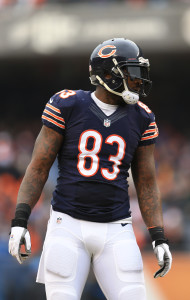 campaign was a bit underwhelming, the 29-year-old still averaged 69 receptions, 705 yards, and nearly five touchdowns a season during his three years in Chicago. Bennett (6-foot-6, 273 pounds) is similar to Gronk (6-foot-6, 265 pounds), so fans shouldn’t necessarily expect the second-coming of the Gronkowski/Aaron Hernandez duo. However, there’s no denying the tight end’s talent in the passing game, and it’s easy to envision Bennett being one of Brady’s five favorite targets (alongside Gronkowski, Edelman, Amendola, and Lewis).
campaign was a bit underwhelming, the 29-year-old still averaged 69 receptions, 705 yards, and nearly five touchdowns a season during his three years in Chicago. Bennett (6-foot-6, 273 pounds) is similar to Gronk (6-foot-6, 265 pounds), so fans shouldn’t necessarily expect the second-coming of the Gronkowski/Aaron Hernandez duo. However, there’s no denying the tight end’s talent in the passing game, and it’s easy to envision Bennett being one of Brady’s five favorite targets (alongside Gronkowski, Edelman, Amendola, and Lewis).
Otherwise, the Patriots made a number of moves to acquire picks during the draft. The team dealt off the second-round pick acquired from Arizona, and they acquired a pair of draft picks that ultimately turned into offensive lineman Joe Thuney and wideout Malcolm Mitchell. The Patriots also ended the draft having acquired a pair of 2017 draft picks.
Draft picks:
The Patriots forfeited their first round pick as a result of the Deflategate fiasco, but the team still managed to emerge with five rookies selected in the first four rounds.
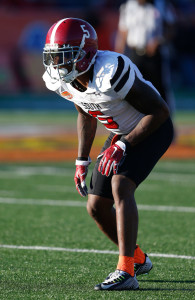 With their second-round pick, the Patriots selected Alabama defensive back Cyrus Jones. While the talented defender may not be tall enough to establish himself as a top corner, he’ll certainly be able to contribute in the slot. Jones also put up impressive return numbers during his three years in college, including a 23.4-yard kick return average and an 11.9-yard punt return average. While it may take the rookie sometime to carve out a roll on defense, Belichick could easily lean on Jones in the return game in an attempt to preserve Amendola and Edelman.
With their second-round pick, the Patriots selected Alabama defensive back Cyrus Jones. While the talented defender may not be tall enough to establish himself as a top corner, he’ll certainly be able to contribute in the slot. Jones also put up impressive return numbers during his three years in college, including a 23.4-yard kick return average and an 11.9-yard punt return average. While it may take the rookie sometime to carve out a roll on defense, Belichick could easily lean on Jones in the return game in an attempt to preserve Amendola and Edelman.
The Patriots have added several offensive guards over the past few seasons, leading some to question the selection of lineman Joe Thuney. However, the North Carolina State product has the ability to play both guard and tackle, and recent reports have indicated that the rookie is already taking hold of the starting left guard spot. Thuney’s presence could also allow the team to move on from lineman Marcus Cannon.
The Patriots continued to surprise with their next third-round pick, selecting Thuney’s college quarterback, Jacoby Brissett. The speedy signal-caller had two solid seasons in the ACC, completing around 60-percent of his passes and running for another 899 yards. The rookie will 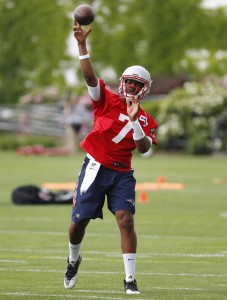 back up Jimmy Garoppolo through the first month of the season, although if the Patriots simply needed a third quarterback, they could have signed one of a number of available free agents. Rather, the selection may indicate that the Patriots are hoping to capitalize on a potential Garoppolo breakout. If the third-year quarterback plays well enough during Brady’s absence, the Patriots could deal the signal-caller while still having a talented prospect in their back pocket.
back up Jimmy Garoppolo through the first month of the season, although if the Patriots simply needed a third quarterback, they could have signed one of a number of available free agents. Rather, the selection may indicate that the Patriots are hoping to capitalize on a potential Garoppolo breakout. If the third-year quarterback plays well enough during Brady’s absence, the Patriots could deal the signal-caller while still having a talented prospect in their back pocket.
With defensive tackle Alan Branch under contract, it’s unlikely that third-round pick Vincent Valentine will be able to contribute in 2016. However, both Branch and Knighton are on the wrong side of 30, so the Nebraska product could have a future role on this squad. Fourth-rounder Malcolm Mitchell has some big-play potential, although the wideout competing with a number of players for the team’s fourth receiver slot.
Among the team’s later-round picks, linebacker Kamu Grugier-Hill has already shown flashes during camp. There’s no reason why the Eastern Illinois product couldn’t beat out Rufus Johnson, Jonathan Freeny, or Ramon Humber for the Patriots’ fourth linebacker slot. Depending on the health of the Patriots receivers, seventh-rounder Devin Lucien could even see some time on the field.
Extensions and Restructures:
Tom Brady has continually been willing to restructure his contract, allowing the Patriots to have more cap flexibility. The star quarterback signed another extension this offseason, with the contract lasting until Brady is 42-years-old. Brady has been a relative bargain for the Patriots in recent years, never accounting for more than a $15MM cap number.
The Patriots also extended safety Patrick Chung’s contract through 2018, raising the veteran’s 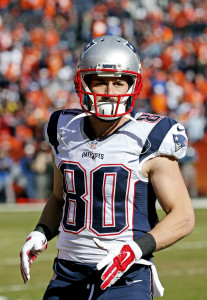 2016 salary in the process. Since returning to New England in 2014, Chung has started 29 of his 31 games, averaging 85 tackles and 8.5 passes defender during that span.
2016 salary in the process. Since returning to New England in 2014, Chung has started 29 of his 31 games, averaging 85 tackles and 8.5 passes defender during that span.
Perhaps the most notable contract restructuring was that of wideout Danny Amendola. There were questions regarding whether the 30-year-old and his $5MM salary would stick around for 2016. However, the wideout took a massive pay cut, reducing that number to $1.25MM. Despite several injuries, the receiver has established himself as one of Brady’s targets over the past few years. While the team presumably wouldn’t have missed a beat without Amendola, his veteran presence will certainly be appreciated (especially if Edelman misses considerable time).
Looking forward, the team has several notable players up for extensions, and it may not be easy for the squad to lock up the entire group long-term. Four starting defenders will actually be reaching free agency in 2017, including Jamie Collins, Dont’a Hightower, Malcolm Butler  (restricted free agent), and Jabaal Sheard. The Chandler Jones trade provided a bit of clarity on the team’s overall thinking (mostly that Jones was towards the bottom of the Patriots’ list of long-term priorities). However, there’s still no evident pecking order when it comes to inking these players to extensions, although Collins’ youth and production would likely put him in line for the largest payday. Per usual, Belichick and the front office will likely be exploring which of the four players would be willing to stay in New England on team-friendly deals.
(restricted free agent), and Jabaal Sheard. The Chandler Jones trade provided a bit of clarity on the team’s overall thinking (mostly that Jones was towards the bottom of the Patriots’ list of long-term priorities). However, there’s still no evident pecking order when it comes to inking these players to extensions, although Collins’ youth and production would likely put him in line for the largest payday. Per usual, Belichick and the front office will likely be exploring which of the four players would be willing to stay in New England on team-friendly deals.
It’s also worth noting that the Patriots are working with Gronkowski on an extension, despite the tight end having four years left on his contract. The 27-year-old’s base salary peaks at $9MM in 2019.
Other:
Despite the flurry of offseason moves, quarterback Tom Brady commanded the media’s  attention. Nearly 18 months after the infamous AFC Championship Game, Brady announced that he would drop the appeal of his four-game suspension stemming from the Deflategate fiasco. While the NFL Player’s Association could continue the appeals, the organization is operating under the assumption that Brady will miss the first four games of the upcoming season. Anticipation of a suspension may have prompted the team to draft quarterback Jacoby Brisset, with the rookie presumably backing up fill-in starter Jimmy Garropolo through the first month.
attention. Nearly 18 months after the infamous AFC Championship Game, Brady announced that he would drop the appeal of his four-game suspension stemming from the Deflategate fiasco. While the NFL Player’s Association could continue the appeals, the organization is operating under the assumption that Brady will miss the first four games of the upcoming season. Anticipation of a suspension may have prompted the team to draft quarterback Jacoby Brisset, with the rookie presumably backing up fill-in starter Jimmy Garropolo through the first month.
While the Brady suspension will presumably have a negative impact on the squad, the return of offensive line coach Dante Scarnecchia should have more than a positive impact. The long-time coach retired following the 2013 season after 32 years in the league, including 30 in New England. Dave DeGuglielmo replaced the coach on the sidelines for the past two seasons, and despite modest rushing and sack numbers, the unit was continually outclassed by talented defensive lines (as seen in this year’s AFC Championship Game against the Broncos).
News of Michael Williams torn ACL certainly wasn’t encouraging, but the team should more than make up for his absence with Bennett and Harbor. Meanwhile, the team’s decision to not pick up guard Jonathan Cooper’s contract was not much a surprise, as the team will likely let the former first-rounder prove himself during his first season in New England.
Finally, none of the team’s undrafted free agents figure to play much of a role at the start of the season, although the Patriots seemingly find a diamond in the rough every few years. Considering the uncertainty at the pair of positions, if two players had an opportunity to emerge, it could be running back D.J. Foster (Arizona State) and cornerback Jonathan Jones (Auburn).
Top 10 cap hits for 2016:
- Tom Brady, QB: $14,000,000
- Nate Solder, T: $10,322,666
- Devin McCourty, S: $7,397,500
- Dont’a Hightower, LB: $7,751,000
- Jabaal Sheard, LB: $6,812,500
- Rob Gronkowski, TE: $6,618,750
- Chris Hogan, WR: $5,500,000
- Sebastian Vollmer, T: $5,208,334
- Martellus Bennett, TE: $5,185,000
- Marcus Cannon, OL: $4,754,168
The Patriots are rarely predictable when it comes to offseason moves. While the 2014 offseason saw the addition of several big names (led by Darrell Revis), the 2015 offseason was more about the team’s subtractions (including Revis, Brandon Browner, Vince Wilfork, and Shane Vereen).
The team’s 2016 offseason saw the best (and worst) of both worlds. While the loss of Chandler Jones will certainly sting, the team will certainly welcome additions like Long, McClellin, and Bennett. Of course, the team is also returning the majority of the core that made it to last year’s conference championship game. Since the team seemingly got stronger, we should only expect more of the same this upcoming season.
Contract information from Over the Cap, Spotrac, and Roster Resource was used in the creation of this post. Photos courtesy of USA Today Sports Images.
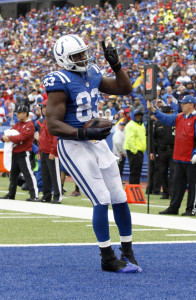
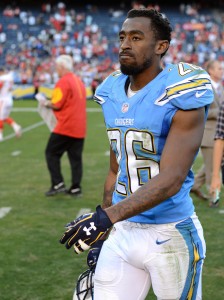

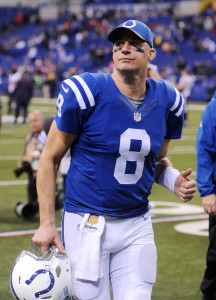
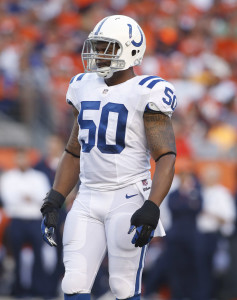
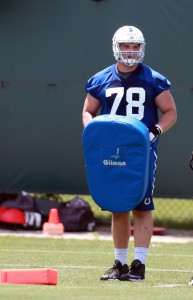
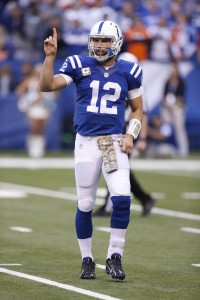
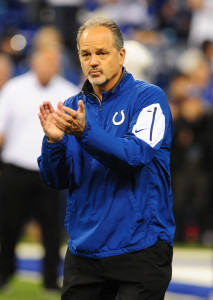


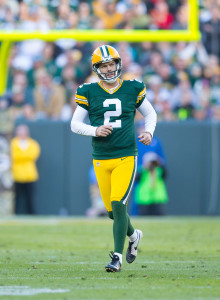
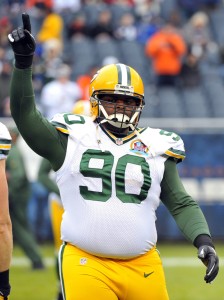
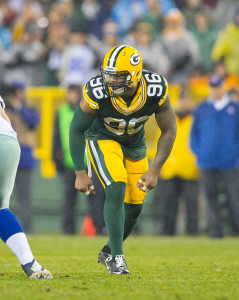
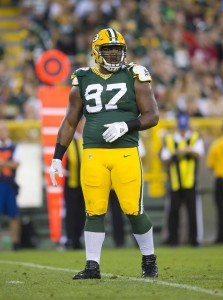
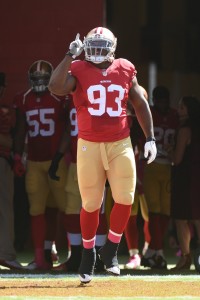
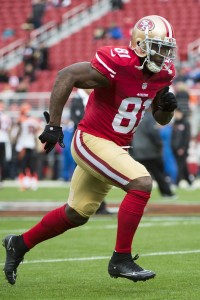
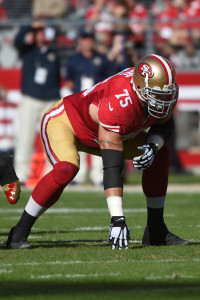
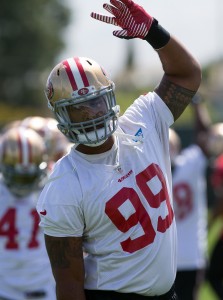


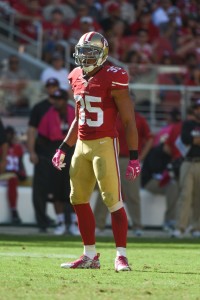
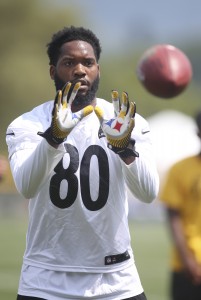
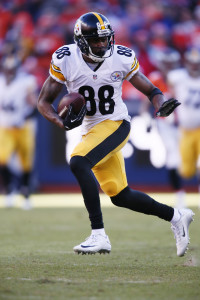
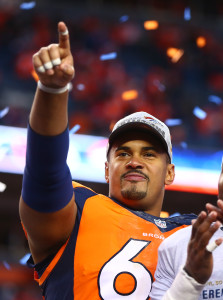
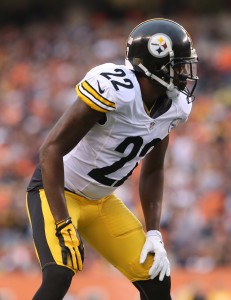


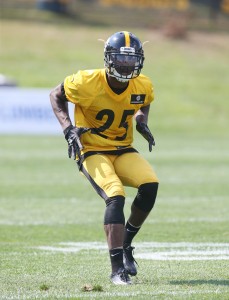

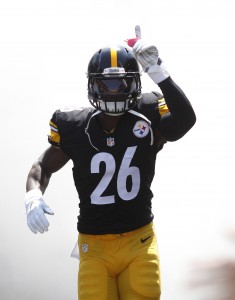

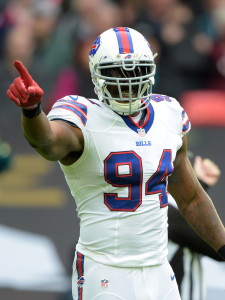
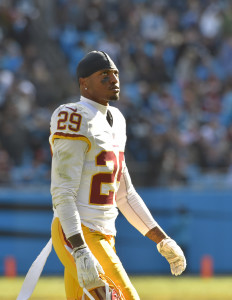

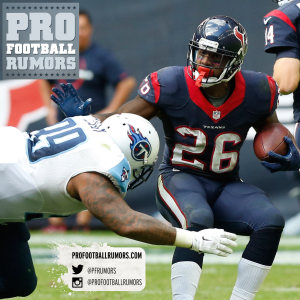
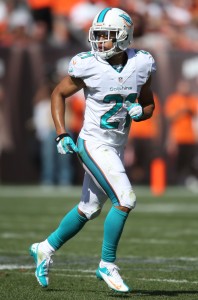
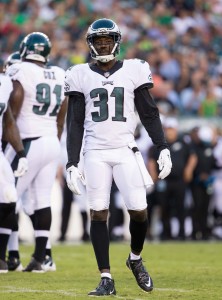
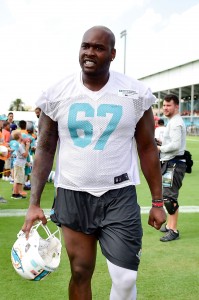
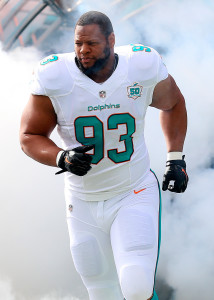
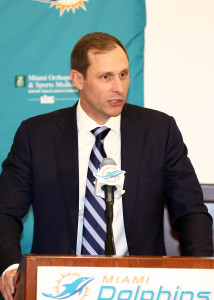
















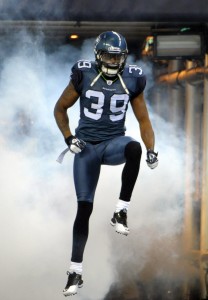
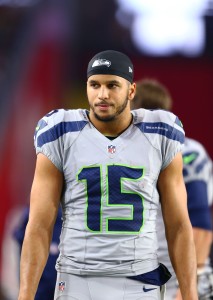
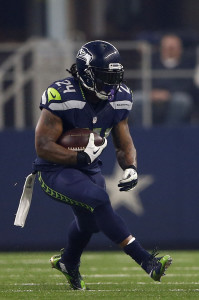
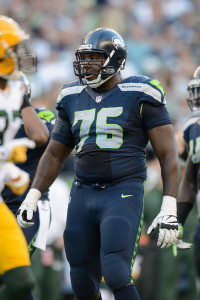
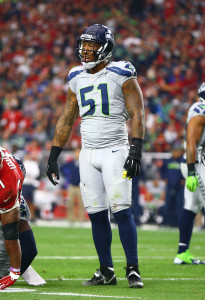

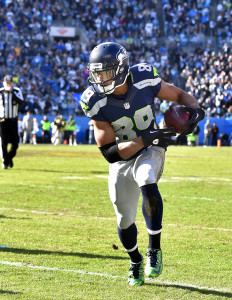
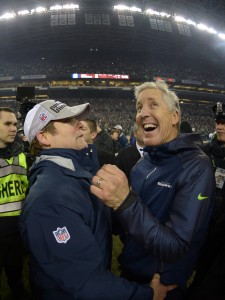
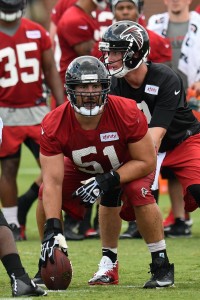
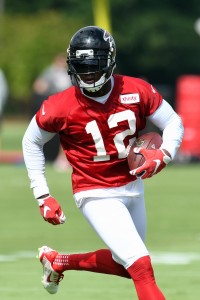

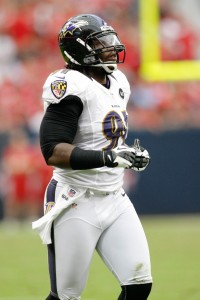
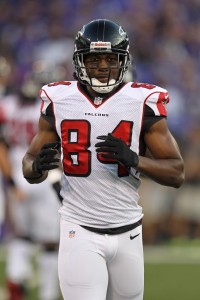
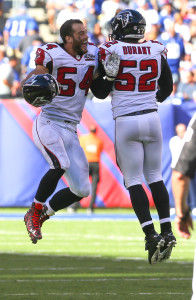
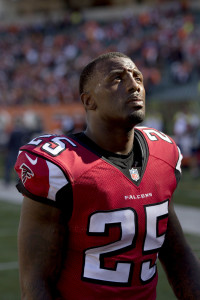
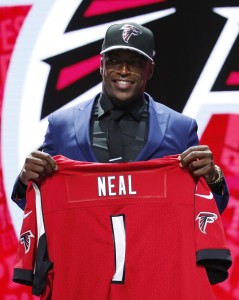


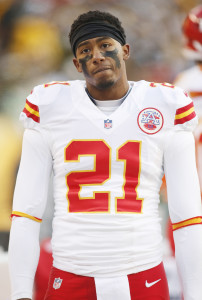
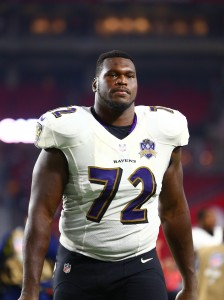

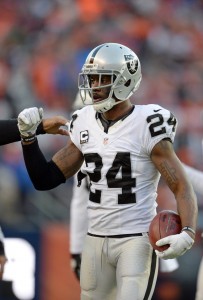
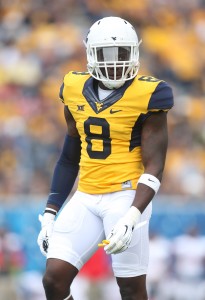
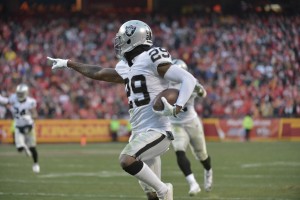
 L city? Sin City quickly transformed from an afterthought to a serious threat to steal the Raiders, progressing much further in its pursuit of finalizing a stadium plan than the team’s current city has. Davis has
L city? Sin City quickly transformed from an afterthought to a serious threat to steal the Raiders, progressing much further in its pursuit of finalizing a stadium plan than the team’s current city has. Davis has 
